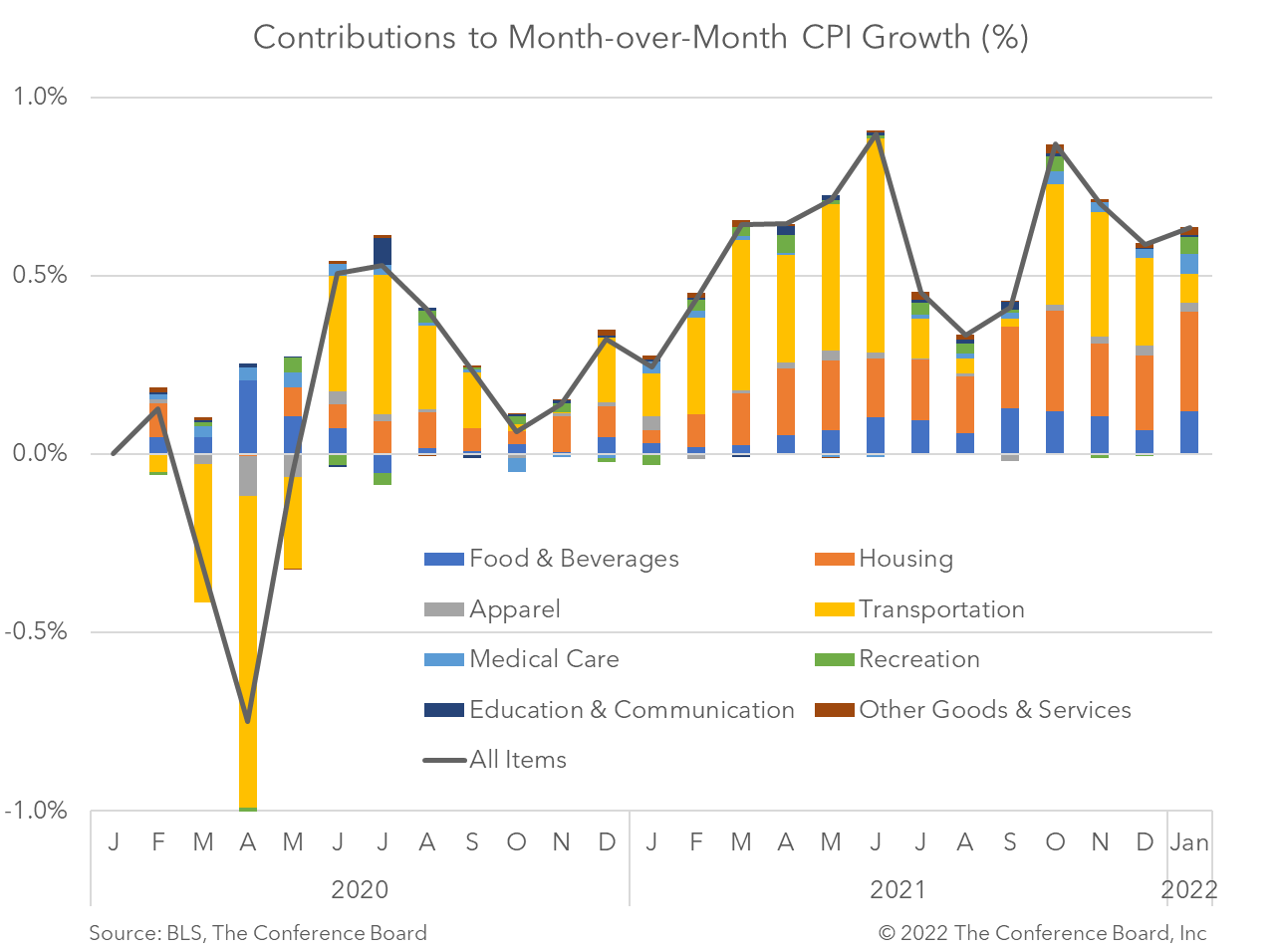January CPI Rises to 7.5 Percent
10 Feb. 2022 | Comments (0)
The Consumer Price Index (CPI) rose to 7.5 percent year-over-year in January, vs. an increase of 7.0 percent year-over-year in December. This key measure of consumer price inflation is now at the highest rate recorded since 1982. Core CPI, which excludes volatile food and energy prices, rose by 6.0 percent year-over-year, vs. 5.5 percent in December.
While the year-over-year rate increased for headline CPI, the associated month-over-month rate grew at about the same rate seen in December (see chart). This higher-frequency interpretation of the data suggests that inflation didn’t worsen in January, but it did not improve either. The impact of Omicron on economic activity last month was a key factor in keeping price growth elevated – as workers called in sick and supply chains were disrupted. Looking ahead, we may see month-over-month inflation begin to moderate again over the coming months as the pandemic becomes less severe. That said, inflation will remain high relative to pre-pandemic trends throughout 2022 and into 2023.
Housing costs, up 0.7% month-over-month, rose more quickly than in December, and were the largest contributor to overall CPI growth in January. Rents, which were depressed during the worst of the pandemic, continued to normalize, rising by 0.5% compared to December. Growth in owner’s equivalent rent, which is the rent a homeowner might receive if she rented her house and a 24 percent share of the CPI index, was steady at 0.4% month-over-month. Meanwhile, prices for food at home jumped by nearly 1% month-over-month (vs. 0.4 in December), and the cost of energy, which includes gasoline and electricity, was up 0.9% month-over-month (vs. up 0.9% in December).
The Federal Reserve’s more hawkish tone on inflation remains appropriate. Presently, we anticipate quantitative easing (QE) tapering to conclude by March, followed by four 25 basis point rate hikes this year, and potentially some modest runoff of the balance sheet later in 2022.

-
About the Author:Erik Lundh
Erik Lundh is a principal economist at The Conference Board. Based in New York, he is responsible for much of the organization’s work on the US economy. He also works on topics impacting the glo…


0 Comment Comment Policy